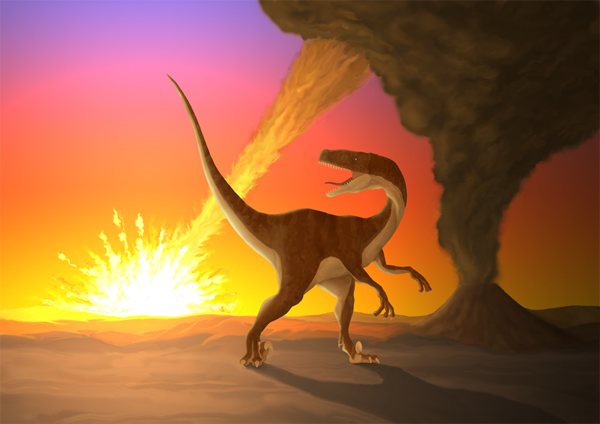Large pieces of charcoal can't be transported great distances,
大塊的木炭不可能移動很長的距離,
they can't be picked up and lofted in smoke plumes or carried around the world
它們不存在于煙云中,也無法被分帶到世界各處,
so therefore if we can find charcoal at each KT boundary location
所以如果我們能夠在每個第三紀界線層中都找到木炭,
we can be sure that burning occurred at each site.
那么就可以斷定森林大火遍及了地球的每個地方。
In 2003, Claire Belcher scoured North America looking for charcoal.
在2003年,Claire Belcher走遍了北美洲尋找木炭。
She collected samples from eight KT boundary sites, from New Mexico in the south right up into western Canada.
她從8個分布有第三紀界線層的地點采集樣本,從南部的新墨西哥一直到加拿大西部。

In the lab she searched the samples for traces of charcoal, which show up white under the microscope.
在實驗室里,她在樣本中探尋著木炭的痕跡,可是樣本在顯微鏡下卻呈現出白色。
She was amazed at what she discovered... there was almost none.
她對自己的發現頗為吃驚,木炭幾乎不存在。
What we did find however was a lot of this non charred plant material.
我們發現的是許多不曾燒焦的植物材料。
This was really surprising because it means that to have this amount of non charred plant material in the KT boundary rocks,
這一結果出人意料,因為它說明第三紀界線層中有大量未曾燒焦的植被,
there's no way that there can have been a globally extensive wild fire
那么也就根本不可能有全球范圍內的自然大火,
because it just simply wouldn't have left so much non charred material on the rock record.
因為它不可能把這么多的未燒焦物質留在巖石檔案中。











